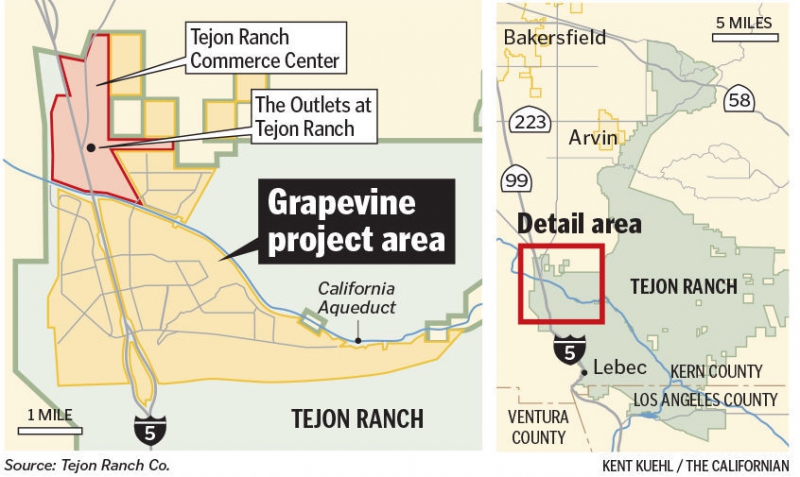From the Open-Publishing Calendar
From the Open-Publishing Newswire
Indybay Feature
Kern County Approves Sprawling 8,000-acre Grapevine Development
BAKERSFIELD, Calif., December 6, 2016 — The Kern County Board of Supervisors today approved Tejon Ranchcorp’s disastrous Grapevine project, despite criticism from the Center for Biological Diversity about the harm the project will do to wildlife and nearby communities. The 8,000-acre development will straddle the San Joaquin Valley and Tehachapi Mountains and create a new city of up to 12,000 dwelling units and up to 5.1 million square feet of commercial real estate.
The project will destroy habitat for the endangered San Joaquin kit fox, blunt-nosed leopard lizard and threatened San Joaquin antelope squirrel, along with up to 36 other rare and imperiled species.
“The blunt-nosed leopard lizard and San Joaquin antelope squirrel are teetering on the brink of extinction,” said Ileene Anderson, a biologist with the Center. “It’s tragic that the county’s willing to sacrifice these species on the altar of an unsustainable sprawl development.”
At buildout the Grapevine project is expected to generate approximately 200,000 daily vehicle trips. Because of its remote location, most Grapevine residents will drive dozens of miles to employment centers in Bakersfield, Santa Clarita and Los Angeles. The substantial increase in vehicle trips will exacerbate traffic and air pollution.
“At a time when the residents of Kern County already suffer from some of the worst air pollution in the nation, the county should not be adding to residents’ burden by approving this sprawl,” said J.P. Rose, a Center attorney.
The Center and other environmental groups have raised concerns, in a series of comment letters, that the project’s environmental review did not adequately disclose or mitigate the development’s substantial environmental impacts, as required by the California Environmental Quality Act. During a hearing before the Board Dec. 6, Rose warned that the Grapevine Project contravenes smart-growth principles and will “chip away at California’s natural heritage.”
The Center for Biological Diversity is a national, nonprofit conservation organization with more than 1.1 million members and online activists dedicated to the protection of endangered species and wild places.
http://www.biologicaldiversity.org/news/press_releases/2016/grapevine-development-12-06-2016.html
Center for Biological Diversity
http://www.biologicaldiversity.org/
“The blunt-nosed leopard lizard and San Joaquin antelope squirrel are teetering on the brink of extinction,” said Ileene Anderson, a biologist with the Center. “It’s tragic that the county’s willing to sacrifice these species on the altar of an unsustainable sprawl development.”
At buildout the Grapevine project is expected to generate approximately 200,000 daily vehicle trips. Because of its remote location, most Grapevine residents will drive dozens of miles to employment centers in Bakersfield, Santa Clarita and Los Angeles. The substantial increase in vehicle trips will exacerbate traffic and air pollution.
“At a time when the residents of Kern County already suffer from some of the worst air pollution in the nation, the county should not be adding to residents’ burden by approving this sprawl,” said J.P. Rose, a Center attorney.
The Center and other environmental groups have raised concerns, in a series of comment letters, that the project’s environmental review did not adequately disclose or mitigate the development’s substantial environmental impacts, as required by the California Environmental Quality Act. During a hearing before the Board Dec. 6, Rose warned that the Grapevine Project contravenes smart-growth principles and will “chip away at California’s natural heritage.”
The Center for Biological Diversity is a national, nonprofit conservation organization with more than 1.1 million members and online activists dedicated to the protection of endangered species and wild places.
http://www.biologicaldiversity.org/news/press_releases/2016/grapevine-development-12-06-2016.html
Center for Biological Diversity
http://www.biologicaldiversity.org/
Add Your Comments
Comments
(Hide Comments)
Tejon has recently gained an agreement to access Nickel water for this planned "community" which was worked out by the for-profit and private Kern County Water Agency for quite an attractive pile of money. Obviously the KCWA was also looking for the most promising buyer for water it controls.
Tejon wanted to rush approval through the Kern County Board of Supervisors, because if Southern California's drought endures, more exigent water demands would arise and Tejon could, out of this necessity, lose the whole plan.
While practically everyone in the Board of Supervisors chambers was gushing over and singing praises to Tejon (the layer of golden eggs) last Tuesday, they should have been giving a more serious look at the Environmental Impact Report they so casually approved.
Tejon wanted to rush approval through the Kern County Board of Supervisors, because if Southern California's drought endures, more exigent water demands would arise and Tejon could, out of this necessity, lose the whole plan.
While practically everyone in the Board of Supervisors chambers was gushing over and singing praises to Tejon (the layer of golden eggs) last Tuesday, they should have been giving a more serious look at the Environmental Impact Report they so casually approved.
For more information:
http://www.bakersfield.com/news/supervisor...
"The project will destroy habitat for the endangered San Joaquin kit fox, blunt-nosed leopard lizard and threatened San Joaquin antelope squirrel, along with up to 36 other rare and imperiled species."
- Center for Biological Diversity
- Center for Biological Diversity

SAVING THE SAN JOAQUIN KIT FOX
Even with its big, conspicuous ears and relatively long legs, the slender-built San Joaquin kit fox is the smallest member of the dog family in North America. Historically, this kit fox was widely distributed throughout grassland, scrubland and wetland communities in the San Joaquin Valley and adjacent low foothills, but agricultural, urban and industrial development in the Valley — including oil and gas development — has led to extensive and continuing loss of native habitat, the primary threat to kit foxes. Today, much of the kit fox’s remaining habitat is extremely fragmented, movement corridors are degraded or blocked, and only a few large areas of native grasslands remain on the San Joaquin Valley’s perimeter.
Besides habitat loss, the San Joaquin kit fox is threatened by pesticides and rodenticides expelled through intensive agricultural use, by industrial and infrastructure projects, and in residential areas in the Central Valley. Kit foxes’ small-mammal prey base has been significantly reduced by rodenticides, which not only kill kit foxes’ prey, but can also kill kit foxes when they build up in the foxes’ bodies. In 2006, the Center released a report on Bay Area species harmed by pesticides, and the next year we sued the Environmental Protection Agency for registering and allowing the use of 56 toxic pesticides in habitats for 11 Bay Area species. In 2009, we filed a notice of intent to sue the Bureau of Land Management for approving a new oil and gas lease sale in sensitive kit fox habitat. And in 2013, we filed a notice of intent to sue the California Department of Pesticide Regulation to protect the endangered San Joaquin kit fox, golden eagle, Pacific fisher and other wildlife from unintended poisonings from “super-toxic” rat poisons.
The San Joaquin kit fox was federally listed as an endangered species in 1967 and was listed by California four years later; the fox has gotten some help from a 1998 recovery plan for upland San Joaquin Valley, in which it’s described as an “umbrella species” — meaning efforts to save the fox’s habitat will benefit other native plants and animals. In August 2010, the Center petitioned the U.S. Fish and Wildlife Service to designate critical habitat for the San Joaquin kit fox.
Even with its big, conspicuous ears and relatively long legs, the slender-built San Joaquin kit fox is the smallest member of the dog family in North America. Historically, this kit fox was widely distributed throughout grassland, scrubland and wetland communities in the San Joaquin Valley and adjacent low foothills, but agricultural, urban and industrial development in the Valley — including oil and gas development — has led to extensive and continuing loss of native habitat, the primary threat to kit foxes. Today, much of the kit fox’s remaining habitat is extremely fragmented, movement corridors are degraded or blocked, and only a few large areas of native grasslands remain on the San Joaquin Valley’s perimeter.
Besides habitat loss, the San Joaquin kit fox is threatened by pesticides and rodenticides expelled through intensive agricultural use, by industrial and infrastructure projects, and in residential areas in the Central Valley. Kit foxes’ small-mammal prey base has been significantly reduced by rodenticides, which not only kill kit foxes’ prey, but can also kill kit foxes when they build up in the foxes’ bodies. In 2006, the Center released a report on Bay Area species harmed by pesticides, and the next year we sued the Environmental Protection Agency for registering and allowing the use of 56 toxic pesticides in habitats for 11 Bay Area species. In 2009, we filed a notice of intent to sue the Bureau of Land Management for approving a new oil and gas lease sale in sensitive kit fox habitat. And in 2013, we filed a notice of intent to sue the California Department of Pesticide Regulation to protect the endangered San Joaquin kit fox, golden eagle, Pacific fisher and other wildlife from unintended poisonings from “super-toxic” rat poisons.
The San Joaquin kit fox was federally listed as an endangered species in 1967 and was listed by California four years later; the fox has gotten some help from a 1998 recovery plan for upland San Joaquin Valley, in which it’s described as an “umbrella species” — meaning efforts to save the fox’s habitat will benefit other native plants and animals. In August 2010, the Center petitioned the U.S. Fish and Wildlife Service to designate critical habitat for the San Joaquin kit fox.
For more information:
https://www.biologicaldiversity.org/specie...
In recent months, while taking Megabus back and forth between L.A. and S.F., oftentimes the buses stop at Tejon Ranch, where 60-80 passengers get off and spend money (not me; I don't want to support Tejon Ranch after all this). This arrangement seems strange to me; the decision to stop there doesn't seem logical. Tejon Ranch is only about an hour out of L.A., so going north it's too soon to have a rest stop, and going south the bus is practically home anyway. I can't help but wonder if there's some kind of incentive for Megasbus to stop so much there since it doesn't seem practical. In any case, I guess I need to find a way to express my displeasure about this to Megabus.
For more information:
http://la.indymedia.org/features/Indigenou...
We are 100% volunteer and depend on your participation to sustain our efforts!
Get Involved
If you'd like to help with maintaining or developing the website, contact us.
Publish
Publish your stories and upcoming events on Indybay.
Topics
More
Search Indybay's Archives
Advanced Search
►
▼
IMC Network





